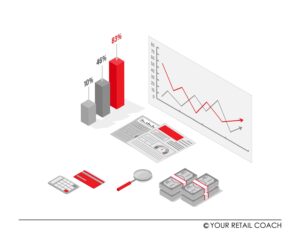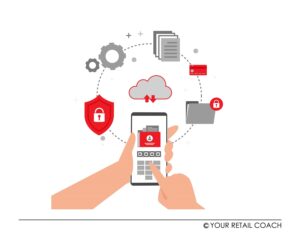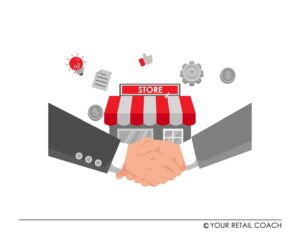Odoo ERP for Retail - Planning and Implementation Solutions
What is Odoo Retail or Odoo for Retail?
Odoo is an open-source and cloud-based business management software. It allows the integration of applications used for managing various business functions and processes like manufacturing, supply chain, logistics, inventory, finance, HR, CRM, etc. These features apply to retail management as well. Odoo allows retailers to bring the management of their core processes under one unified and integrated platform. Odoo applications support the following important retail functions/areas:
Odoo ERP Application Support:
-
- Inventory
- CRM
- ECommerce
- Purchase
- POS
- Website building
- Marketing Automation
- Accounting
- Recruitment
- Social Marketing
- Invoicing
- Appraisals
- IoT
And more.
The biggest contemporary benefit of Odoo to retailers is that it enables them to integrate their omnichannel operations management and deliver a seamless and superior customer experience. With Odoo ERP, retailers can further improve customer experience with simplified and quick check-out where customers do not have to fill up multiple fields every time or keep navigating through pages to complete the check-out process. Retailers get the flexibility of adding a wide range of payment solutions to their customers as that has become a norm in retail and eCommerce. It is also easy and intuitive to design appealing eCommerce pages with Odoo. For other core and support operations, Odoo ERP for retail covers inventory, purchase, sales, finance, HR, etc. And being a cloud-based application, a business can be also managed remotely.
In a nutshell, Odoo ERP provides retailers with all the fundamental features that any modern-day ERP for retail management needs to have.
Challenges in Implementing Odoo ERP
Inaccurate Mapping of Business Requirements vis-à-vis the ERP Solutions
One of the most important traits of successful ERP implementation is that the application delivers the intended performance and output. For this, the right ERP application must be chosen and customised as per the business requirements. And to have the right ERP solution in hand, the business requirements must be accurately mapped in the backdrop of the potential ERP solutions in consideration. And the default applications available in the market come in a universal shape. The preliminarily chosen product must allow for the necessary customisations to suit the specific business and functional requirements. The challenge is acute with small and medium businesses that usually do not maintain an in-house IT team. Even for big enterprises with IT departments, ERP implementation is a separate skill set. The right time to be looking for expert Odoo implementers or Odoo consultants is during the early stages of contemplation.
Budget Overruns

ERP implementations require a project-oriented approach that encapsulates the need to have proper budgetary plans. It is also important that these budgets are realistic and carry the necessary provisions for budget escalations. This helps businesses to contain their actual project expenditure within the allocated budget. Not having a planned and realistic budget for an ERP implementation project could result in temporary halts and extensions of the project timelines.
Budget overruns are more common than casually assumed. Amid ERP implementation projects, there arise situations where improvisations and customisations are called for or become necessary. When such contingencies emerge, the scope of implementation and the project timelines get extended. More resources have to be poured in causing to inflate the original budget. So, if the Odoo implementation cost has to be contained, the principles of financial and project management have to be followed.
Data Migration

To make use of the existing data, businesses transfer or migrate this data to the new ERP platform or software application. This data contains a lot of useful information but not all of it is necessary. This is a challenge as well as a mistake that businesses end up making when they have to sort the required information from their old databases or they choose to simply move all of the old data to the new software. There is no point in storing data that has no relevance for business in the present day. Besides, data storage comes with a price. Old data can also get mingled with the information processing of the new software to produce unnecessary reports and insights in them. It can confuse the users who are already trying to cope with the new workflows and interfaces. A majority of the old data might have also got redundant.
Undermining Training and Support
The users need to be made convergent and comfortable using a new ERP application. There are new interfaces, new workflows, new links and tabs, new terminologies, new reports and formats, etc. With the presence of external trainers or consultants, things may seem going north. But when responsibilities begin to fall back into the users’ laps, the clouds of doubts and confusion also begin to hover. It is during this stage that the organisational adaptability of the ERP begins to speak. Without the necessary training, support, and initiatives for change management concerning the user-employees, drawing the benefits of the ERP becomes unsustainable for businesses.
Executive Sponsorship
The involvement of the top-level management is vital when a change as big as incorporating a new ERP in an organisation is concerned. This role could be played by the owner himself or his/her close aides in the case of a small or medium enterprise, or the CEO or COO or CTO of the company. This is not just for keeping the morale in check or getting everyone’s support in the project but also to streamline internal activities required for the implementation. With the support of a senior executive, it becomes easier for a project manager to get things done within and outside the organisation that contributes to the successful implementation of the ERP solution.
Finding the Right Vendor/Channel Partner

Just because you are dealing with the vendor or channel partner of any top-notch IT brand does not mean you may get reluctant with the vendor selection standards and criteria. The standards apply to all potential vendors who could or claim to provide you with the right ERP product. Any reluctance here lands businesses in ending up with poor deals. The ill consequences could arise in the form of higher purchase and maintenance costs, poor after-sales services, slower turnaround, lack of professional commitment and dedication, etc. Businesses end up with the wrong vendors because of not having a vendor selection strategy and process in the first place.
How YRC can help
We provide Odoo implementation services to retail and eCommerce business enterprises. The service design and delivery are carried out by expert and experienced Odoo ERP consultants. Our professionals adhere to planned and improvised processes from the beginning to the end of the implementation exercise. We work with zero tolerance for aberrations from the established standards and requirements of implementation. We cover the following key service areas in this service module.
Need Validation and Feasibility Analysis
In need validation and feasibility analysis, our team works to justify and define the client’s business case for implementing Odoo ERP solutions in their organisations. We always recommend and seek to answer some of the most fundamental questions that help clients set the vision for having Odoo ERP.
– What end results are being targeted?
– How will it impact the business model and customer experience?
– Which retail functions/processes are to be altered?
– Are there ideal solutions in the market?
– Are the internal resources and support systems available?
– How will the purchase and maintenance of the ERP be funded?
– What are the existing skills of the users and what kind of user training will be required?
It is important to answer these and other root questions to provide a sense of direction to the Odoo ERP implementation exercise.
Support in Mapping Requirements and Customisation
Odoo comes with unique software solutions for unique business functions. Unlike other software suites in the market, Odoo’s offerings are simple and straightforward. It is easier for businesses to pick an Odoo product. But Odoo is an open-source platform. The customisation part often emerges as a challenge for businesses that do not have internal IT expertise. This is where our Odoo consulting services fit in. Our experts help clients not only choose the right product but also act as their extended IT-business support wing to deal with the vendor or channel partner in customising the chosen product to meet the business requirements. Prior to that, the team shall map these business requirements by working in close coordination with clients or their representatives.
Development of Vendor Search and Selection Process
Having a sound vendor selection process is a healthy business practice. It is a step to ensure that businesses do not end up forging long-term ties with incompatible vendors. Even if there is only one channel partner/vendor, businesses still should prioritise following due diligence in screening the vendor. Our role here is to design and develop the vendor selection process for our clients. Apart from mapping the procedures for search and selection, various screening criteria incorporated in this process include experience in handling similar projects, implementation capacity, professional commitment and dedication, after-sales support and services, etc. We put clients’ business requirements first in developing this process and making the assessments and putting forth our recommendations.
Testing and Implementation
After mapping business requirements, vendor appointment, completing the purchase, and software customisation, we move to design the actual implementation plan and execute the implementation. Testing remains a part of the entire implementation exercise as we adopt a planned and systematic approach to reach the final goal of taking the software platform live. A host of suitable implementation strategies are considered here to arrive at the best-fit strategy. An implementation plan is designed based on the products to be implemented, business requirements and constraints. SOP-driven processes are developed and executing this implementation plan. Standards and timelines are defined for every activity. The roles and responsibilities of all involved stakeholders are outlined including those of the vendor/channel partner. An expert team of Odoo functional consultants oversees and carries out this entire implementation exercise. Deviations and inconsistencies are reported to the partner/vendor team for necessary corrections. Clients remain informed during the entire implementation journey with our active and transparent feedback mechanism.
User SOP Training and User Blueprint Manuals
We have already highlighted the significance of user training for ERP or any other business management software application. It is critical to make users (employees) feel comfortable with a new software platform as well as technically confident to use it. One software can drastically vary from another even if their utilities are the same. The users need to know what happens when they click somewhere or where the old functionalities have gone or where to check for something and so on. On a new interface, it can get frustrating. Training and user manuals provide the much needed initial impetus to get the wheel to roll.
We provide the necessary user training and user blueprint manuals for successful and sustainable ERP incorporation to retail and eCommerce businesses. We help businesses effectively manage digital transformations like ERP incorporation in their organisations. We seek to improve the learning curve of employees in adapting to a new software platform. Our goal is not simply to make employees convergent with a new software environment but to also provide them with a fundamental understanding of the software platform and its functioning. The perspectives of different users are duly taken into consideration in designing the training modules and manuals.
We are retail management consultants. After 10+ years of rendering services to 500+ clients in 20+ verticals, today, we are a brand with an international presence in more than ten countries. Every day, our process and SOP solutions for retail ERP implementation continue to relate with businesses from all over the world.


We work only for Visionaries.